Discovering Tutankhamun with Photographer Harry Burton
In 1922, the Egyptologist Howard Carter asked the Metropolitan Museum of Art to lend him the services of Harry Burton, a photographer then working for the Museum's Egyptian expedition.
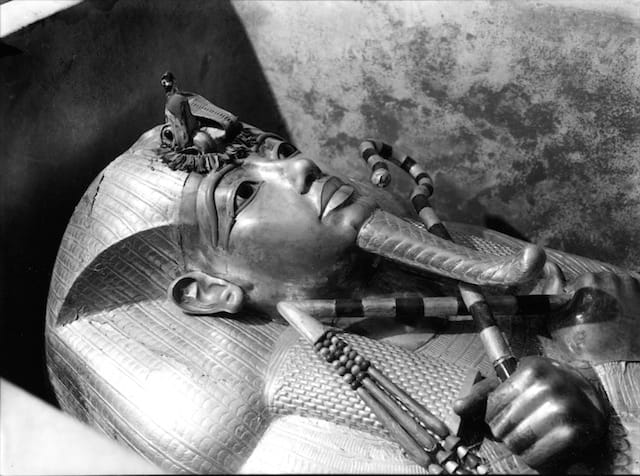
In 1922, the Egyptologist Howard Carter asked the Metropolitan Museum of Art to lend him the services of Harry Burton, a photographer then working for the Museum’s Egyptian expedition. Carter had just found the burial chamber of the boy pharoah Tutankhamun in the Valley of the Kings, and backed financially by the Fifth Earl of Carnarvon, he was planning to excavate it. Burton would spend the next eight years shadowing Carter inside the three-millennia-old tomb.
Several of the 14,000 images he took are now on display at the Ashmolean’s Discovering Tutankhamun exhibit at Oxford University. Looking at these black-and-white photographs, we glimpse Carter’s engrossed bedazzlement as he peers inside the ancient vault, opens the doors to the shrine holding King Tut’s sarcophagus, and studies the coffin’s contents. In a world where mummies have become horror movie gags, Burton’s images convey the fresh enthusiasm of Carter’s famous telegram announcement in November 1922: “At last have made wonderful discovery in Valley,” he wrote to Lord Carnarvon, “a magnificent tomb with seals intact.”
The images are also telling of their day. While British gentlemen in shirtsleeves and spectacles unseal an ancient culture not their own, its descendants wait on them at meal times and carry the heavy loads of their discoveries on their shoulders, presumably for shipment elsewhere. These murkier aspects of the excavation escaped the public when Burton’s photographs were published in The Times in 1922. The world quickly fell head-over-heels into the Roaring Twenties’ Egyptmania. As The New York Times reported in 1923:
“There is only one topic of conversation…One cannot escape the name of Tut-Ankh-Amen anywhere. It is shouted in the streets, whispered in the hotels, while the local shops advertise Tut-Ankh-Amen art, Tut-Ankh-Amen hats, Tut-Ankh-Amen curios, Tut-Ankh-Amen photographs, and tomorrow probably genuine Tut-Ankh-Amen antiquities. Every hotel in Luxor today had something a la Tut-Ankh-Amen…There is a Tut-Ankh-Amen dance tonight at which the piece is to be a Tut-Ankh-Amen rag.”
Take a look at some of Burton’s images:
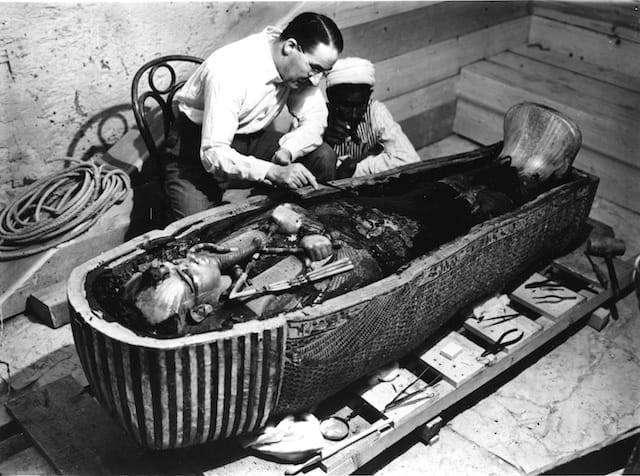
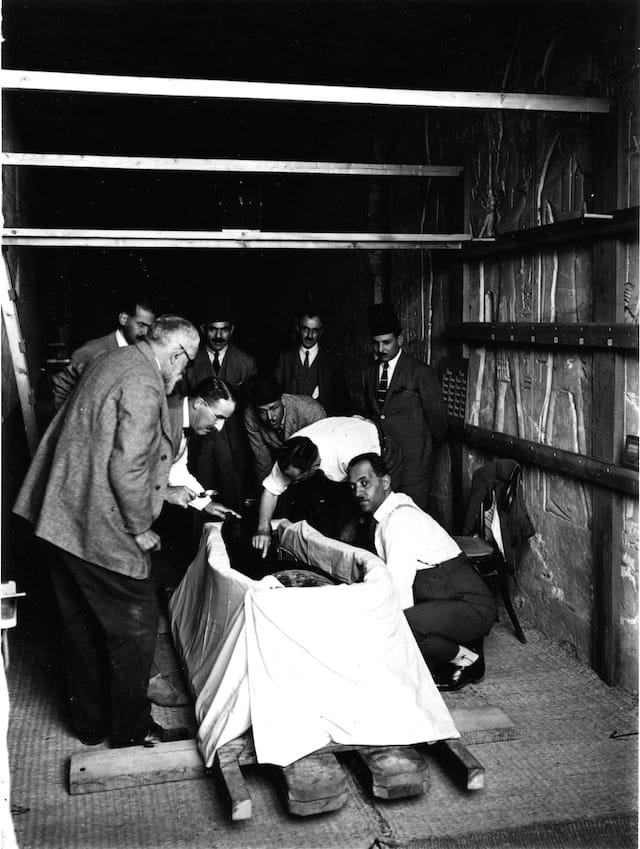
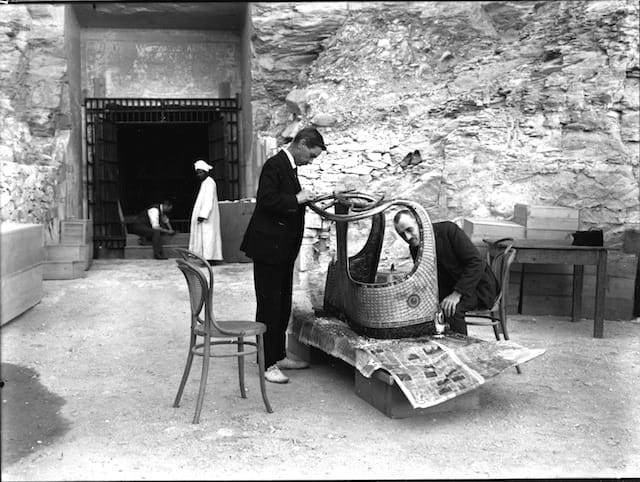

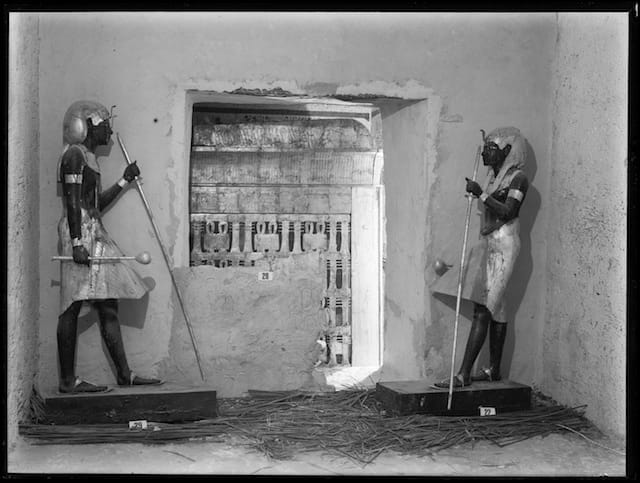
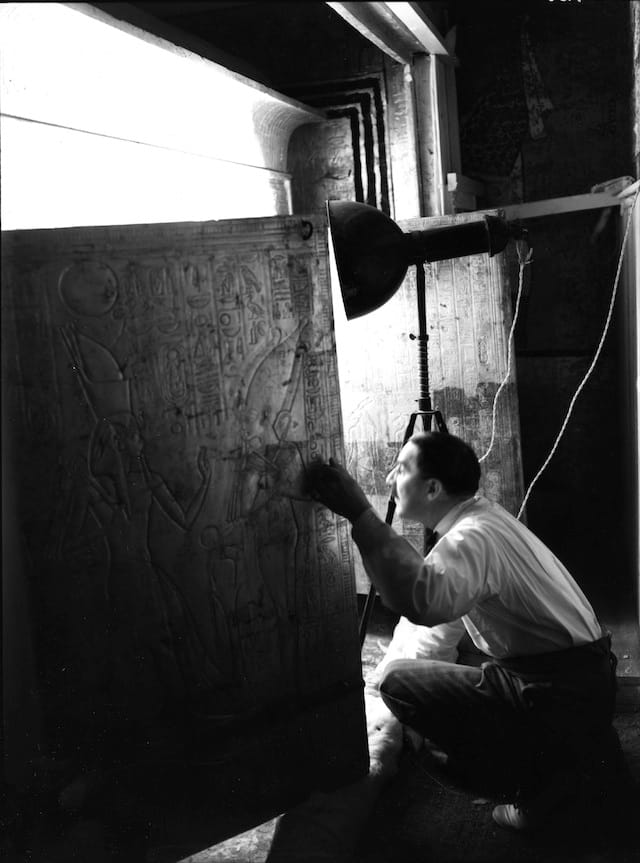
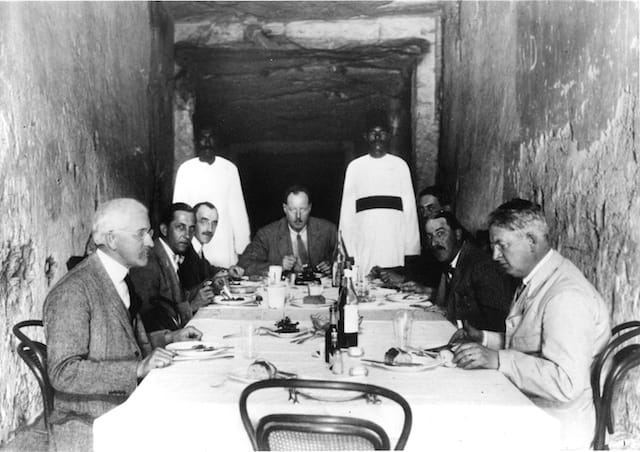
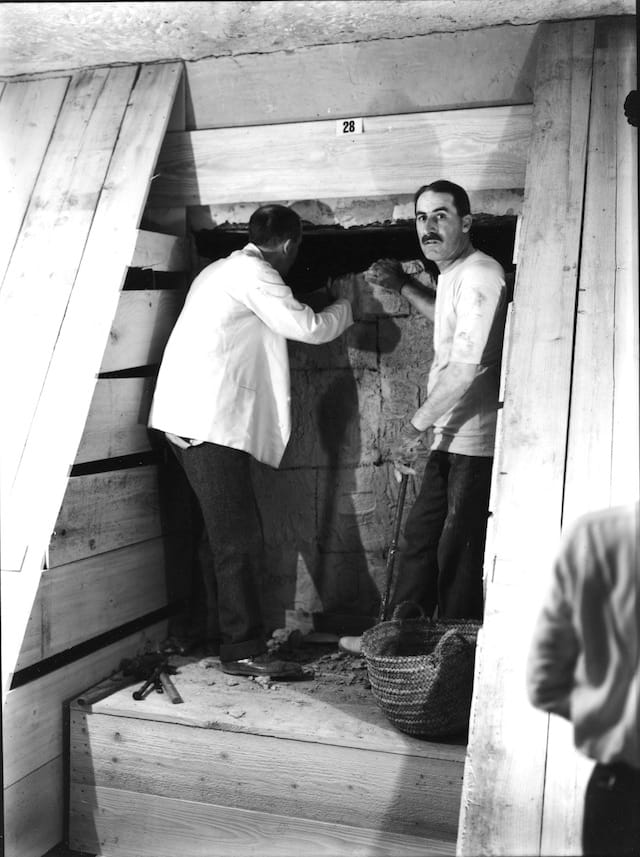

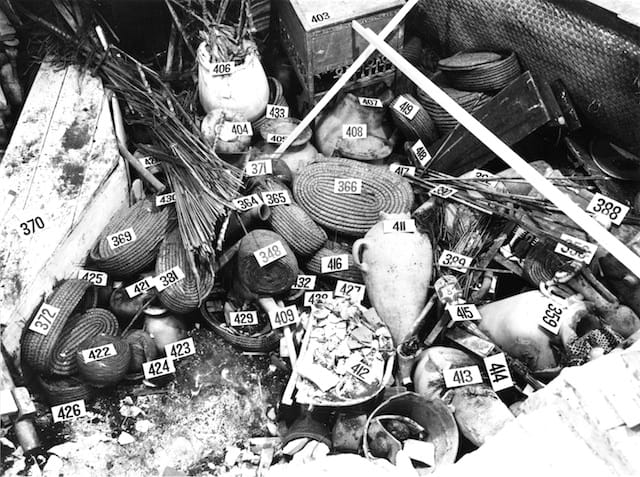
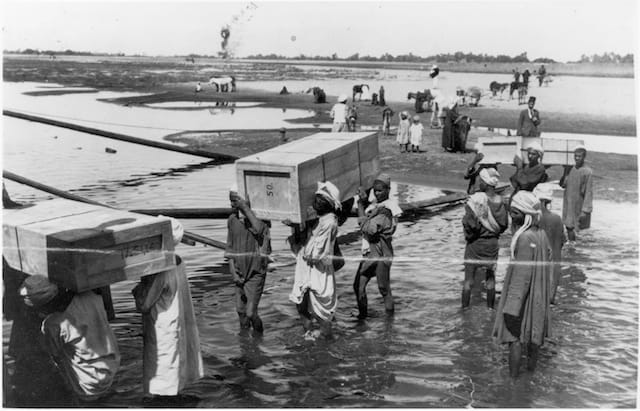

Discovering Tutankhamun continues at Oxford University’s Ashmolean Museum (Beaumont Street, Oxford, UK) until November 2.




